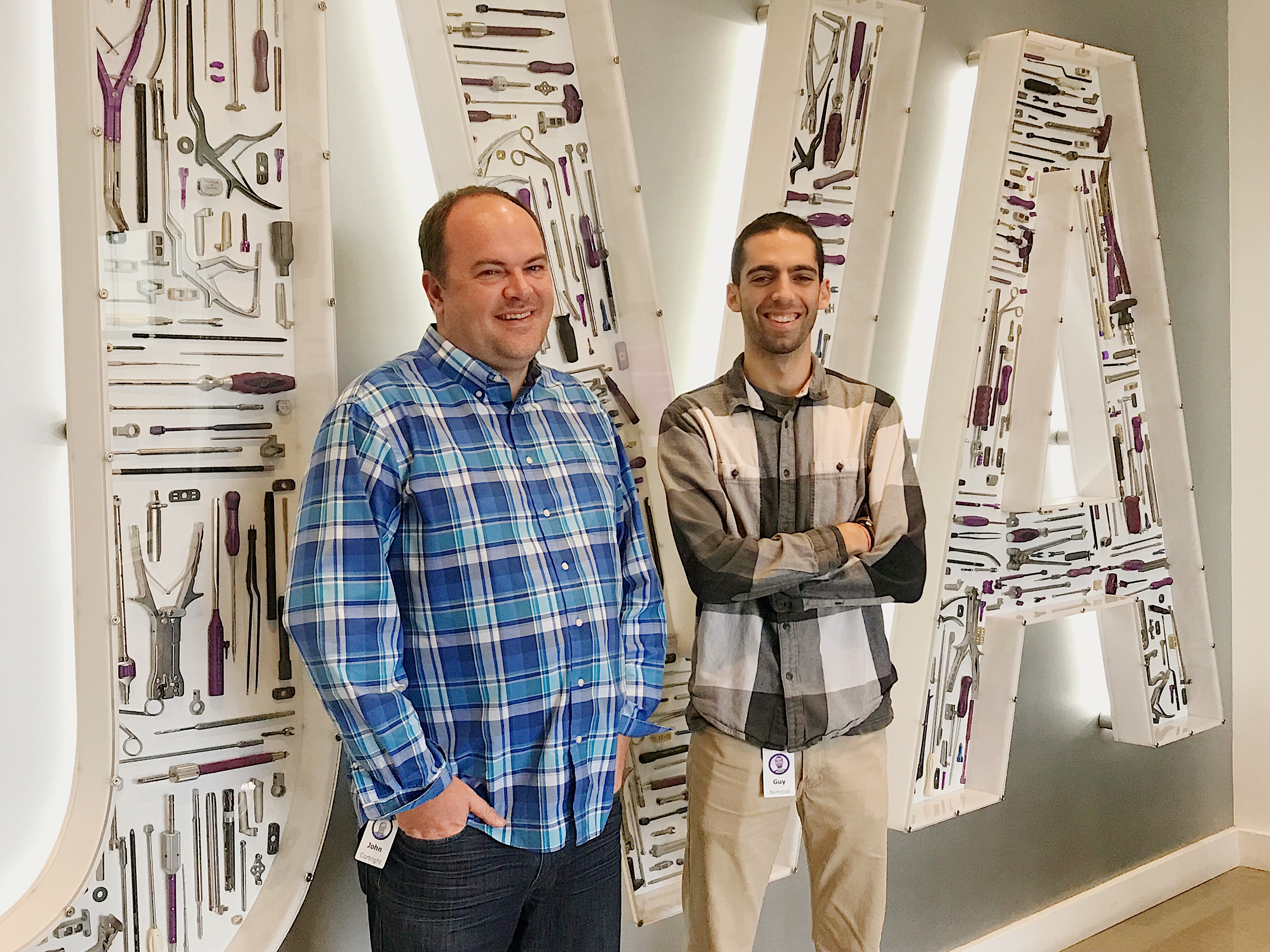We’re featuring Pulse® surgical automation platform innovators, Guy, Development Engineer, and John, Software Engineer, to give you an inside look into what it’s like helping drive innovation here at NuVasive.

What has been your biggest “win” in the process of building Pulse?
John, Software Engineer: The one thing that stands out for me during development was when we implemented the image registration part of the navigation application. Registration is the process that maps real-world locations into locations in the image. Once we had that, we were suddenly able to show the surgical instruments moving in real-time in the 3D image. Dropping that piece in and being able to “navigate” was pretty cool.
Guy, Development Engineer: The biggest team win so far was getting our 510(k) clearance earlier this year for both 2D and 3D Navigation. Personally, my biggest win was implementing design freeze on the 360 arrays. These are the first arrays on the marker designed for tracking the full rotation of surgical instruments, so being able to finally freeze the design on three unique arrays was big. This was also my project as an intern here so seeing that come full circle was really satisfying.
What skills did you have to acquire to be able to create navigation technology?
John: Navigation requires a lot of very intricate pieces working together harmoniously to produce the desired effect. We have a large team working on these various aspects of the project, with dependencies on one another. Managing that complexity in both the technical and logistical sense has been challenging.
Guy: Like John said, navigation requires a lot of small pieces to interact together seamlessly, so being able to understand how each piece works and using this knowledge to create better designs makes this project really fun.
Sometimes the first idea might not be the best idea. Was the original idea for navigation within Pulse what it is today? If it changed, what necessitated the change?
John: Our development process is iterative, purposefully allowing for change to happen along the way. With every tweak, the final product hopefully gets just a bit better. As such, almost every aspect of the application has changed from how it was first envisioned.
Guy: I think the overall idea of navigation stayed relatively the same, but we’ve had a lot of iteration on software features, workflow, and hardware components based on design reviews and meetings with surgeons. Going back to the 360 arrays, we went through a research phase of understanding how to design these, then we had a long rapid prototyping phase where we learned the limits of our system, and finally we had a design lock.
How did you collaborate with other team members?
John: Our team is geographically dispersed all over the United States and internationally, so we have meetings virtually. We use screen sharing and cloud-based tools to document our feature development, any bugs, and progress.
Guy: Because navigation is an accumulation of so many moving pieces, we truly have a team of teams with people located all over the world. I’ve really enjoyed the collaboration with the software team and being able to get a more hands-on understanding of our system.
What was your favorite part about the design process?
John: We are fortunate to have a product manager, Geoffrey, who has a ton of clinical experience in navigation cases. His input and everyday involvement have allowed us to refine our design along the way. We are also extremely thankful to our surgeon partners who have been involved in defining the product requirements and sharing their own experiences with surgical navigation. This kind of firsthand knowledge about what works and doesn’t work is invaluable to the development team.
Guy: My favorite part of the design process is seeing an idea become a reality. I was fortunate enough to be on this project since its early days, so I was a part of going from talking about initial ideas for features and workflow in meeting rooms to actually testing components in labs with surgeons. I also really enjoy the collaboration with our surgeon partners, as well as our marketing, regulatory, quality, and purchasing teams. Everyone brings their own experience and knowhow which opens up endless possibilities for how this system can continue to develop over time.
View a few of our other Innovator Interviews: XLIF® Crestline™, Modulus® XLIF, Lateral ALIF™, and RELINE® Small Stature.
If you’re interested in becoming part of the innovation here at NUVA, search our open roles here.